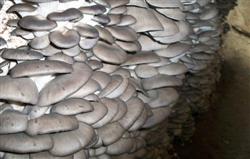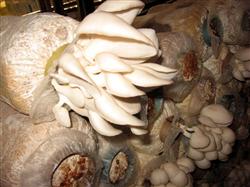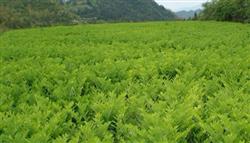How can Pleurotus ostreatus be cultivated for high yield?

How can Pleurotus ostreatus be cultivated with high yield? Please introduce in detail the method of cultivating Pleurotus ostreatus has the advantages of low investment, quick effect and low risk. Planting in autumn can make full use of the scraps of agricultural and sideline products and idle labor in autumn and winter. it takes only one month from input to output, which is a short and quick project to get rich. Culture material formula 1: 40% of cottonseed skin, 45% of corn (2345, 12.00, 0.51%) core, 10% of wheat bran, 4% of quicklime and 1% of compound fertilizer. Formula 2: corncob 75%, Maiao 20%, quicklime 4%, compound fertilizer 1%. Formula 3: corncob 40%, bean straw 35%, wheat bran 20%, quicklime 4%, compound fertilizer 1%. Formula 4: soybean straw 74%, wheat bran 20%, quicklime 4%, compound fertilizer 1%, white sugar (5207,-9.00,-0.17%) 1%. Prepare the culture material to crush the corncob into peanut-sized particles, crush the bean stalk into needles, and mix all kinds of raw materials well according to the ratio of material to water of 1: 1.4. The above-mentioned mixed culture material is piled into a material pile with a height of 0.8 meters, a width of more than 1.5 meters and an unlimited length, and is covered with thin film after drilling to keep warm and moisturizing. Cover the film with grass to keep warm at night, and start to turn the pile when the material temperature rises to 60 ℃. After that, depending on the heating up, turn the pile once every 2 days for a total of 4 Mel 5 times. The microporous bacteria of the plastic (11290,-105.00,-0.92%) bag is made of polyethylene plastic bag with a length of 50 cm and a stacked diameter of 25 cm. 10 holes of 0.3cm in diameter are drilled at 10 cm at both ends of the bag (where the bacteria are placed), and three layers of bacteria are sown, one layer in the middle and one layer at each end. After sowing, the two ends of the bag are tied with plastic rope. The amount of seed used is about 15% of the dry material. After packing the bag, put it in a place with a temperature of 15 Mel 25 ℃, well ventilated, away from light and clean. The number of stacking layers of bacterial bags depends on the air temperature, generally 2murmur4 layers. Often turn over the bacterial bag to avoid fever and burning bacteria. Take off the bag and cover the soil. Remove the plastic bag from the bacterial bag and bury it vertically into the border. The bacterial bag is separated by 2 Murray 4 cm, filled with soil in the middle, covered with 2 cm thick soil, and then watered thoroughly. After 2 days, fill the hole washed out by watering with soil and pour a small amount of water once. According to the air temperature, a small arch shed is built on the border, and a large arch shed is built outside the small arch shed in winter. The big arch shed is not covered by grass during the day, and the grass is covered in the small arch shed to shade the sun. Other management is the same as conventional cultivation. Click to get more cultivation techniques of Pleurotus ostreatus
- Prev

What will happen in the cultivation of Pleurotus ostreatus?
What will happen in the cultivation of Pleurotus ostreatus? This paper introduces the reasons why dead mushrooms often occur in the process of Pleurotus ostreatus cultivation, which is mainly caused by the following reasons: the optimum temperature for Pleurotus ostreatus fruiting body growth is 6-28 ℃. The temperature required by different varieties was different. The suitable temperature of high temperature type was 24-28 ℃, and that of medium temperature type was suitable.
- Next

How to plant Astragalus membranaceus?
How to plant Astragalus membranaceus? Please give guidance to Astragalus membranaceus, also known as Mianqi, Mianqi, Beiqi, is a leguminous perennial herb. Red Astragalus is divided into Red Red Astragalus and White Red Astragalus (commonly known as High Vine Red Astragalus and low Red Astragalus), Red Red Astragalus vine high yield, White Red Astragalus vine low yield; Radix Astragali is divided into Northeast Radix Astragali (Astragalus membranaceus) and Inner.
Related
- Fuxing push coffee new agricultural production and marketing class: lack of small-scale processing plants
- Jujube rice field leisure farm deep ploughing Yilan for five years to create a space for organic food and play
- Nongyu Farm-A trial of organic papaya for brave women with advanced technology
- Four points for attention in the prevention and control of diseases and insect pests of edible fungi
- How to add nutrient solution to Edible Fungi
- Is there any good way to control edible fungus mites?
- Open Inoculation Technology of Edible Fungi
- Is there any clever way to use fertilizer for edible fungus in winter?
- What agents are used to kill the pathogens of edible fungi in the mushroom shed?
- Rapid drying of Edible Fungi

